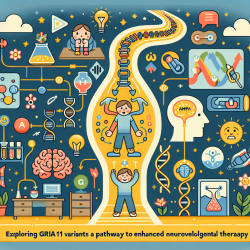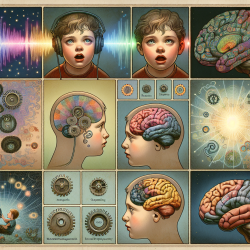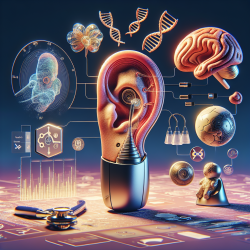Introduction
The recent research article titled "Identification and functional evaluation of GRIA1 missense and truncation variants in individuals with ID: An emerging neurodevelopmental syndrome" sheds light on the significant role of GRIA1 gene variants in neurodevelopmental disorders (NDDs). As speech-language pathologists, understanding these genetic underpinnings can enhance our therapeutic approaches, particularly in children with cognitive and speech impairments.
Understanding GRIA1 and Its Role in NDDs
GRIA1 encodes the GluA1 subunit of AMPA receptors, crucial for excitatory neurotransmission in the brain. The study identified several GRIA1 variants that affect receptor function, leading to a spectrum of neurodevelopmental challenges, including intellectual disability (ID), speech and language delays, and cognitive impairments. The study's findings emphasize the importance of genetic factors in NDDs, particularly those impacting AMPA receptor function.
Key Findings and Implications for Practice
- Variants and Their Impact: The study identified both missense and truncation variants in GRIA1, with significant effects on AMPA receptor function. For instance, the p.Arg377Ter variant completely disrupts receptor expression, while the p.Ala636Thr variant alters receptor function, leading to increased receptor activity.
- Functional Implications: These genetic disruptions manifest as cognitive and speech impairments, providing a direct link between genetic variants and clinical symptoms. This understanding can guide speech-language pathologists in tailoring interventions that address the specific neurodevelopmental needs of affected children.
- Potential for Personalized Therapy: By incorporating genetic information into assessment and intervention planning, practitioners can develop more personalized and effective therapeutic strategies. This approach aligns with the growing trend towards precision medicine in healthcare.
Encouraging Further Research and Collaboration
The study highlights the need for continued research into the genetic basis of NDDs. Collaboration between geneticists, neuroscientists, and speech-language pathologists is crucial to advance our understanding and improve therapeutic outcomes. Practitioners are encouraged to stay informed about genetic research and consider genetic factors when assessing and planning interventions for children with NDDs.
Conclusion
The research on GRIA1 variants offers valuable insights into the genetic underpinnings of neurodevelopmental disorders. By integrating these findings into practice, speech-language pathologists can enhance their interventions, leading to better outcomes for children with cognitive and speech impairments. For a deeper understanding of the study, practitioners are encouraged to read the original research paper: Identification and functional evaluation of GRIA1 missense and truncation variants in individuals with ID: An emerging neurodevelopmental syndrome.










